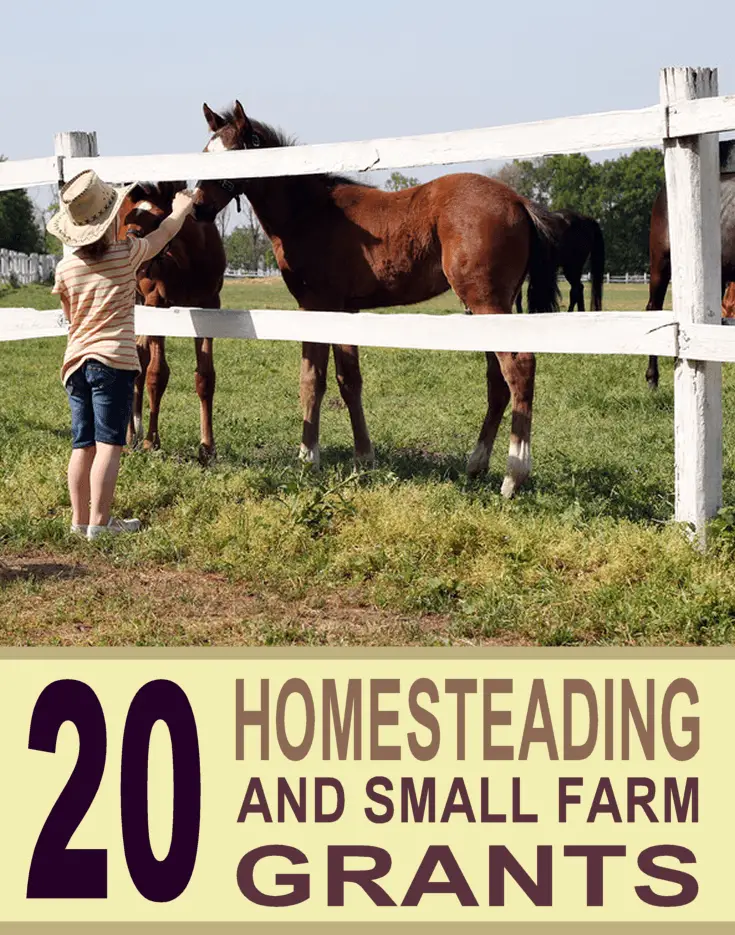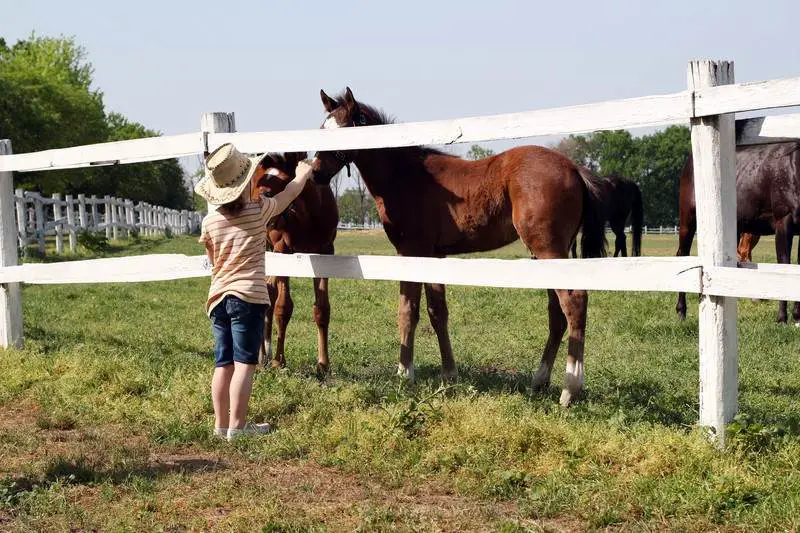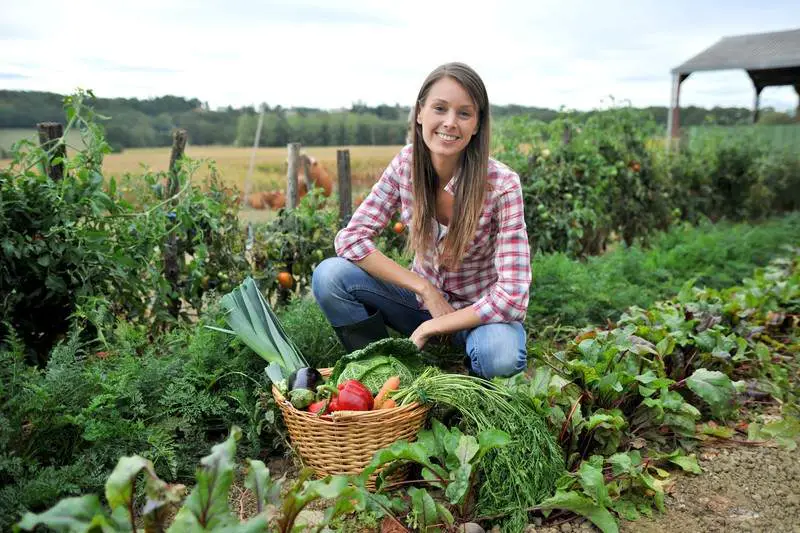We have all had a dream to start a farm or build a remote homestead where we can raise our families. A way to escape from the daily hustle and bustle of our daily lives.
When we fight traffic to and from our mundane jobs, we fantasize about a simpler life where our hard work is rewarded and traditional values are paramount.

Unfortunately, in a society overburdened with debt and little savings, these dreams hardly come true. We are proud people who never look for a handout and continue on this path of unattainable aspirations.
My wife and I were lucky to find our little micro homestead, but I still think of one day owning something I can proudly pass on to the next generation.
Related: 4 Places Where You Can Still Find Free Land
Whenever I publish to our blog, it’s usually something that I am experiencing firsthand. I enjoy sharing my search for something greater. I recently set out on a quest to find private and government funding that my family can use to take our search for sustainability to the next step.
Over the last several weeks, I cataloged all the financial resources I could find. Most of them don’t apply to us, but they may appeal to you. Even if one of these programs can help, you have a good starting point to begin your journey to personal fulfillment.
Farm and Homesteading Grants
- Start2Farm is a collection of programs and resources for beginning farmers and ranchers in the US. The Start2Farm program is funded through the USDA, Beginning Farming and Ranching Development Program grant and was developed to assist people new to farming or ranching and those with less than 10 years of experience. Leading a new generation of USA farmers, affordable credit and loans are offered to beginner farmers and ranchers. The program has seen a positive response from the people as it is growing by 8% each year.
- Minnesota Crop Research Grant Program. There is $2 million available for farmers in Minnesota who want to improve crop yields and the quality of the harvest. The proposal must be written in a way that will benefit the state of Minnesota’s economy or help out local farmers. Further, the grant writing should include genuine reasons and problems and how you can contribute to the nation’s economy.
- RCPP Rice Stewardship Partnership Project. The USDA’s Natural Resources Conservation Service grants to those who produce rice and know how to conserve water while promoting favorable habitats for waterfowl in the rice fields. The Rice Stewardship Partnership Project provides financial and technical assistance to rice crop farmers. It increases water irrigation efficiency and minimizes water quality impacts. However, this grant is only available to Louisiana farms.
- Grow Wisconsin Dairy 20×30 Program. Dairy farmers can apply for a grant that will help them address common issues like food safety, modernizing their operations, and hiring skilled staff. Applicants must be licensed, dairy farmers. This program assists farmers irrespective of the size of the farmland and experience. The Grow Wisconsin Dairy 20×30 Program makes operations efficient with cutting-edge solutions and increases profit. This program helps anyone who wants to start or is already in the dairy business.
- Community Food Projects Competitive Grant Program. Farmers can apply for a grant that will help increase the productivity of their farm through the latest equipment and increase consumer access to the farm’s goods. For eligibility, applicants must be part of a food program service provider.
- Indiana Livestock Promotion and Development Grants. Commissions and non-profits that are directly associated with cattle, sheep, swine, horses, goats and a variety of other livestock can apply for a grant to help fund marketing programs. The Indiana Livestock Promotion and Development grants are exclusively for non-profit organizations to promote growth and development. Research and study programs will also be eligible for funding.
- Western SARE Farmer/Rancher Grants. Individual farmers can get up to $15,000 in grants for experiments that will improve their impact on the environment and discover ways to improve operations in general. Individuals $15,000, while two or more farmers/ranchers can get $30,000. On average, 40 projects are funded each year and each project can last up to 23 months. Applicants must belong to the Western District.
- NCR SARE Farmer/Rancher Grant. Individuals in the North Central region can apply for a grant that promotes sustainable agriculture solutions. Each applicant can apply for a grant of up to $7,500.
- NIFA Specialty Crop Research Initiative. Applicants can apply for a grant addressing common issues with crops and how to breed, improve productivity, and pollinate issues. To apply, you must have a small business license, be a non-profit or be a part of a larger organization.
- Vermont Working Lands Enterprise Board Service Provider. $550,000 in grants is available to help fund projects that will improve Vermont’s local agriculture production. Applicants can apply for grants to improve existing structures, purchase new equipment, and research and development.
- California Specialty Crops Grants. A farmer interested in growing one of the specialty crops on the USDA list could be eligible for a grant. However, it doesn’t cover startup costs like buying starts, seeds, and specialty equipment.
- Missouri Beef Grants. Small to medium-size ranches can apply for up to $20,000 in grant money to modernize their operation. Several other grants are available meant to increase beef production in Missouri.
- California Small Farm Conference Scholarship. This grant allows small farmers and ranchers to attend the conference at a reduced fee or free. The conference lasts 3 days and gives small farms a chance to network and learn from each other.
- Environmental Solutions for Communities Grant Program. It is an excellent way to help the environment by learning and researching sustainable ways of farming and ranching. Favor will be given to proposals supporting community-based conservation practices.
- Minnesota Sustainable Agriculture Demonstration Grant Program. Farmers in Minnesota interested in coming up with new ways to improve existing practices in preserving the environment and resources can apply for a grant. Nearly $250,000 is available.
- Minnesota Livestock Investment Grant. Ranchers who invest at least $4,000 into buying new equipment and improving or building new structures for livestock production are eligible for a 10 percent reimbursement. Any ranchers who suffered a loss because of some disaster can also apply.
- Agricultural Reinvestment Fund. North Carolina landowners can apply for a grant to invest in new agricultural investments. Individual farmers can receive up to $9,000. This program awards around 25 grants per year including grants to farmers ($9000) and grants to collaborative farmer projects of up to $11000. Given that all the eligible counties are located in North Carolina. Today, the program is offering all types of farmers to flourish their farms and contribute to transformation and innovation in the agriculture sector. Till now, 600 farmer projects have been funded with $6 million for agricultural communities.
- Beginning Farmer and Rancher Development Program. You must be a part of a co-op or a college extension group to apply for this grant. This program teaches the new generation of farmers to secure our future farms. The BFRDP provides business and technical skills to aspiring farmers who can start farm operations with hands-on training. Once the project is funded, the farmers can get in touch with the project directly to know the participation process.
- New York State New Farmer’s Grant. In New York, beginning farmers having plots smaller than 150 acres can apply for funds. It is for new farmers having less than ten years farming the land and earning at least $10,000 a year selling their harvest. Some eligible projects are the purchase of machinery, supplies, construction, and improvement of equipment used exclusively for agricultural purposes. There are some mandatory requirements: the farm owner should not be more than 10 years and the gross sales of at least $10k.
- Organic Farming Research Foundation Grants. Farmers interested in going organic can apply for a grant. The grants are meant to help with the research and improvement of organic farming systems.
- Appalachian Grown Cost Share. This is a chance for farmers to get money to promote the food they produce in North Carolina. Grant money can be used to create packaging, labels, or promotional materials. You need to know that it grants $1500 for an individual in a calendar year while $5000 for collaborative farmer groups. It depends on the number of farms in the group. For instance, for 2 farms in a group, the cost share is $3000. For a group of 3 farms, $4500 will be allotted. However, for a group of 4 or more, $5000 is granted.
Did we miss any? Let us know in the comments section.


